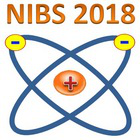Speaker
Mr
Max Lindqvist
(Keio University)
Description
$\:\:\:\:\:\:$Development of $H^-$ ion sources which can produce high beam intensity with a small beam divergence angle is useful in plasma heating systems for magnetic fusion reactors and accelerators for high-energy physics. Since one of the main requirements for the extracted particle beam in Linac4 $H^-$ ion source is to minimize the beam divergence and emittance, it is of vital importance to further our understanding of the extraction mechanisms. However, as of today, the beam formation mechanisms in such $H^-$ ion sources are yet to be fully understood.
$\:\:\:\:\:\:$In previous work by S. Abe the dependence on the beam divergence angle of the extraction voltage by using a 2D Particle In Cell (PIC) model for the extraction region of $H^-$ ions source for Linac4 was analyzed [1]. It was shown that the divergence angle has a minimum value and that this minimum value can be further decreased by taking charge exchange and elastic collisions into account, which play a key role in the flow reversal of $H^-$ ions produced at the PG. The $H^-$ ions extracted from the bulk plasma region due to flow reversal has smaller divergence angle than $H^-$ ions extracted directly from the Plasma Grid (PG) surface. The extracted negative ion beam thus consists of two components: the beam core and the beam halo. [2]
$\:\:\:\:\:\:$The purpose of this study is to clarify the extraction mechanisms of the surface produced $H^-$ ions, in order to optimize the beam optics by varying the PG shape in negative ion sources such as the Linac4 $H^-$ ion source. We, therefore, intend to evaluate the extracted $H^-$ beam divergence angle for various extraction voltages by using a 3D PIC model for the geometry of Linac4 $H^-$ ion source [3]. Furthermore, we intend to survey the extraction mechanisms of $H^-$ ions produced at the PG surface. In particular, the tendency of velocity reversal due to elastic collisions and charge exchange of the surface produced $H^-$ ions will be studied.
$\:\:\:\:\:\:$The results of the extraction mechanism of the surface produced $H^-$ ions are presented. The tendency of the results corresponds to experimental measurements and contributes to validating the 3D PIC model by comparison with experiments and thus further improves our understanding of the extraction mechanisms of $H^-$ ions.
References
[1] S. Abe, S. Nishioka, S. Mattei, A. Hatayama, and J. Lettry, "Effects of the extraction voltage applied by the puller-electrode on the H- extraction in the Linac4 negative ion source", AIP Conference Proceedings 1869, 030051 (2017),
[2] S. Abe, Master’s Thesis, Keio University 2018,
[3] S. Nishioka, , I. Goto, K. Miyamoto, A. Hatayama, and A. Fukano, "Study of ion-ion plasma formation in negative ion sources by a three-dimensional in real space and three-dimensional in velocity space particle in cell model", J. Appl. Phys. 119, 023302 (2016).
Primary author
Mr
Max Lindqvist
(Keio University)
Co-authors
Prof.
Akiyoshi Hatayama
(Keio University)
Prof.
Jacques Lettry
(CERN)
Prof.
Kazuo Hoshino
(Keio University)
Prof.
Kenji Miyamoto
(Naruto University of Education)
Mr
Shota Abe
(Keio University)
Dr
Shu Nishioka
(Keio University)

